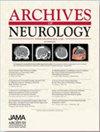The evolution of neurology.
引用次数: 0
Abstract
PROG2S2 UROGRESS in neurology lagged behind other branches of medicine because of the slowness of the development of knowledge regarding the form and function of the nerLJ|vous system. The brain and spinal cord, covered wvith a ! hard, bony shell, are particularly inaccessible to direct examination. The type and nature of disease of these structures could only be inferred from a study of the disorders of function which occurred when they were damaged, until more accurate methods of visualization of details of their intimate structures w;ere discovered. WShen the techniques of auscultation and percussion were introduced into medicine, these methods were applied to the study of the nervous system.They were rapidly discarded as useless. It is interesting to quote from an article written by James Hope in I840: "The diseases of the brain are, at the present moment, more obscure than any great class in the nosology. Twenty years ago, the same was said, and with truth, of the diseases of the lungs and heart; but the elucidation and corroboration of the general symptoms by the physical signs derived from auscultation, percussion, etc., have reversed the proposition and not only redeemed these diseases from their obscurity, but actually rendered their diagnosis more precise and certain than that of any other important class. There are no physical signs applicable to the brain; and, from the circumstances in which the organ is placed, it is to be feared that none will ever be discovered." This pessimism can be understood when one realizes that at this time, the tendon reflexes, plantar responses, and the now well-known signs of dysfunction of the cerebellum, or basal ganglia, had not yet been described. An adequate examination of the nervous system was not possible神经学的进化。
本文章由计算机程序翻译,如有差异,请以英文原文为准。
求助全文
约1分钟内获得全文
求助全文

 求助内容:
求助内容: 应助结果提醒方式:
应助结果提醒方式:


